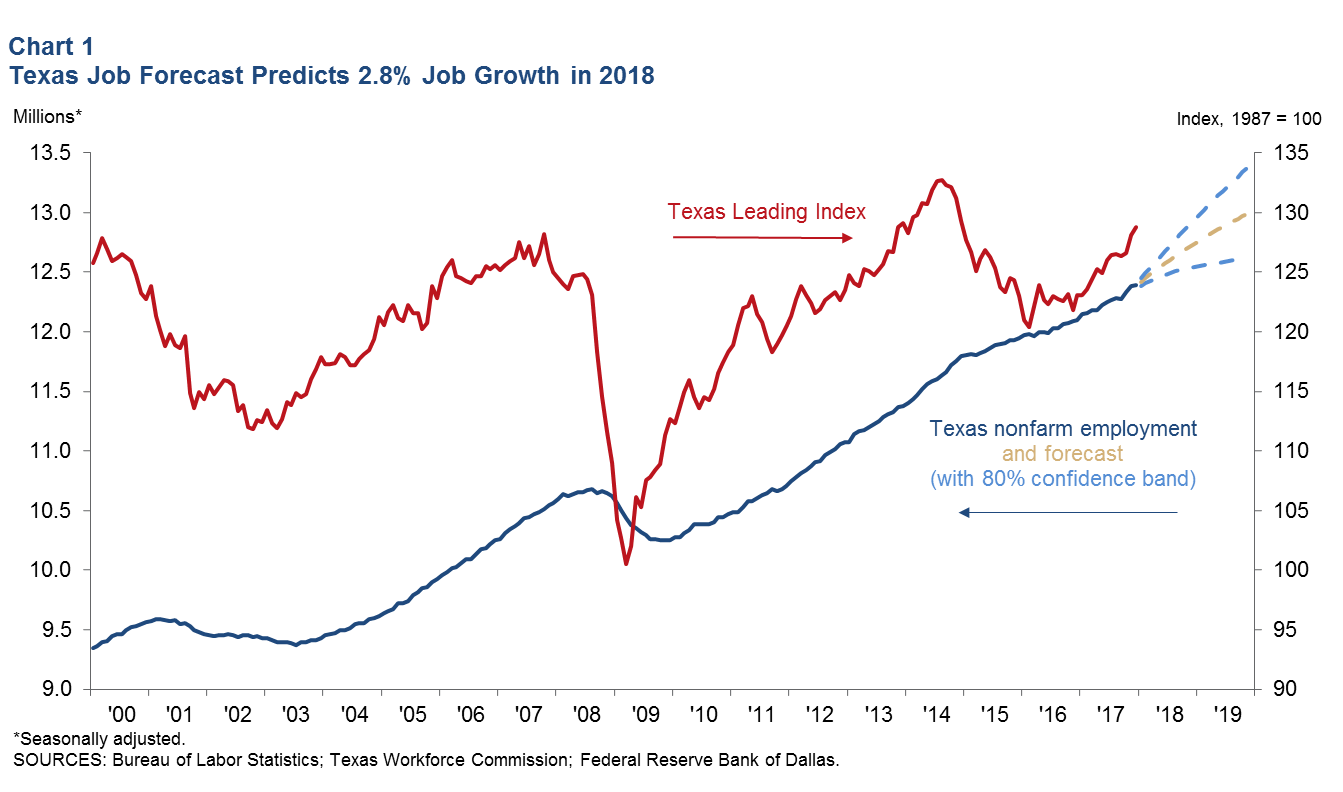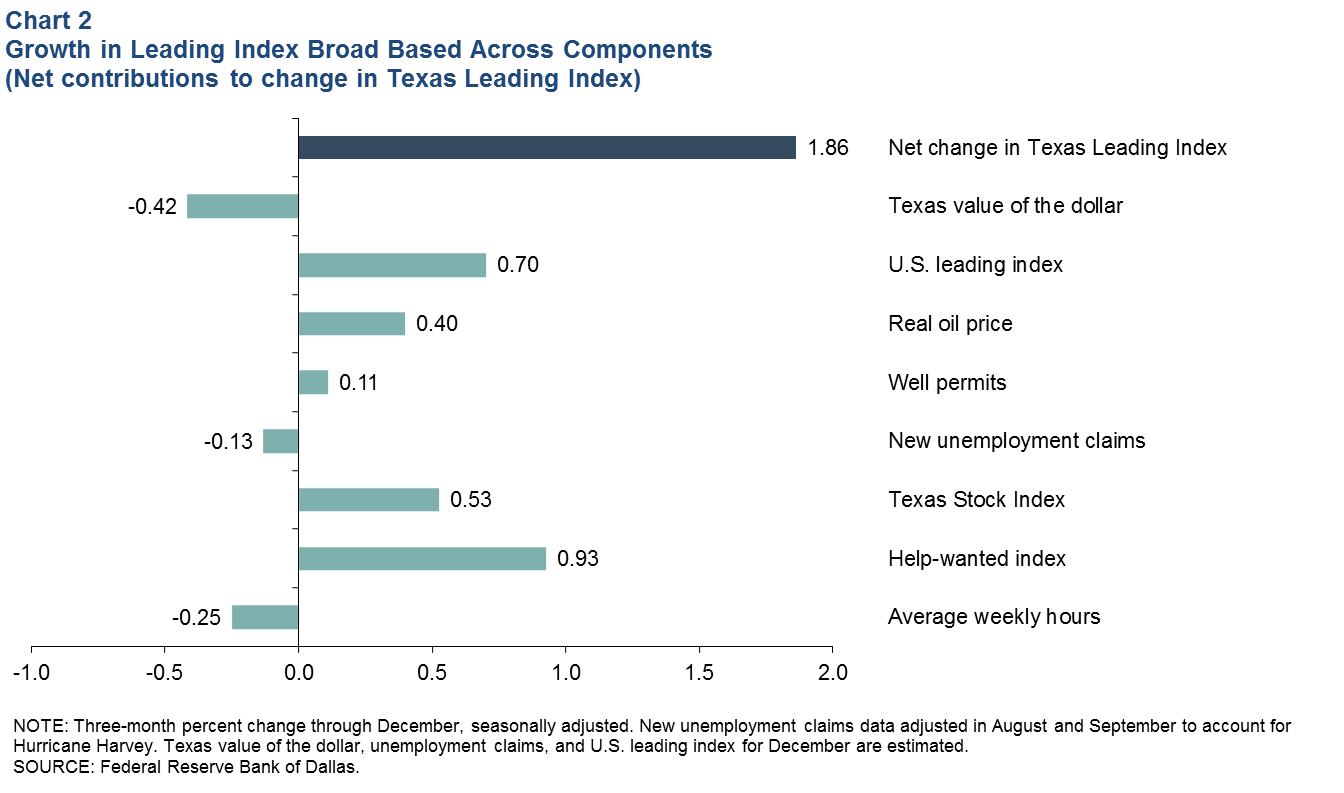Texas Employment Forecast

Incorporating December employment growth of 0.6 percent and leading index data, the Texas Employment Forecast suggests jobs will grow 2.8 percent this year (December/December), with an 80 percent confidence band of 1.2 to 4.4 percent. Based on the forecast, 349,900 jobs will be added in the state this year, and employment in December 2018 will be 12.7 million (Chart 1).
“Growth last year was 2.4 percent, slightly below our December forecast of 2.5 percent but still strong relative to what we saw in 2015 and 2016,” said Keith R. Phillips, Dallas Fed assistant vice president and senior economist. “The improvement in job growth last year from the weak pace of 1.2 percent in 2016 was primarily due to strong rebounds in the energy and manufacturing sectors.
“While December job growth weakened, it followed two months of strong growth, and overall jobs grew at an annual pace of 2.3 percent in the second half of last year—despite Hurricane Harvey hitting the Gulf Coast.”
Recent gains in the Texas Leading Index suggest that the positive momentum in the state in the second half of last year will carry forward into 2018. Adjusting for a temporary spike and subsequent decline in initial claims for unemployment insurance due to Hurricane Harvey, the Dallas Fed’s Texas Leading Index increased strongly over the three months ending in December, rising 1.86 percent (Chart 2). Most of the components increased, with help-wanted advertising posting the largest positive contribution to the index. The U.S. leading index continued to grow at a robust pace over the period, and the Texas Stock Index and real oil prices also saw steady gains. The Texas value of the dollar, average weekly hours worked in manufacturing and initial claims for unemployment insurance were slight drags on the index.

Next release: March 9, 2018
Methodology
The Dallas Fed Texas Employment Forecast projects job growth for the calendar year and is estimated as the 12-month change in payroll employment from December to December. The forecast reported above is a point estimate with 80 percent confidence bands; in other words, the true forecast lies within the bands on Chart 1 with 80 percent probability.
The Dallas Fed Texas Employment Forecasting Model is based on a transfer function that utilizes past changes in state employment along with past changes in the Dallas Fed Texas Leading Index (TLI). Changes in the TLI have an impact on employment with a lead time of three months, and the effect dies out slowly over time. The regression coefficients on lagged changes in employment and the TLI are highly statistically significant, and the model as a whole has been accurate relative to other forecasters over the past two decades.
The forecasting model has been in use at the Dallas Fed since the early 1990s, and the employment forecast has been published in the Western Blue Chip Economic Forecast (WBCF) since 1994. Phillips and Lopez (2009) show that the model has been the most accurate in forecasting Texas job growth relative to other forecasters in the WBCF. In particular, the model had the lowest root mean squared error and has been the closest to the actual the most times (nine of the last 17 years) out of five forecasters that have consistently participated in the survey.
For more details about the model and its performance, see “An Evaluation of Real-Time Forecasting Performance Across 10 Western U.S. States,” by Keith R. Phillips and Joaquin Lopez, Journal of Economic and Social Measurement, vol. 34, no. 2–3, December 2009.
Contact Information
For more information about the Texas Employment Forecast, contact Keith Phillips at keith.r.phillips@dal.frb.org.